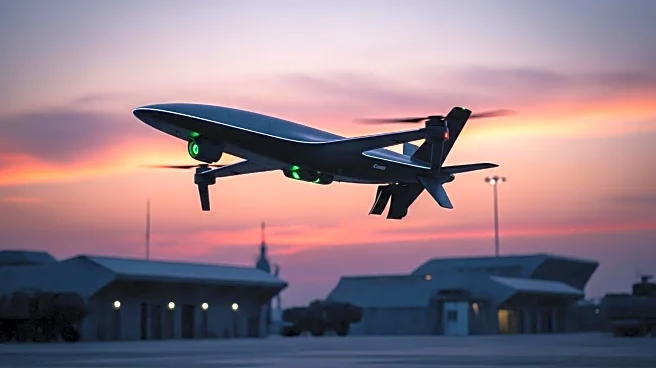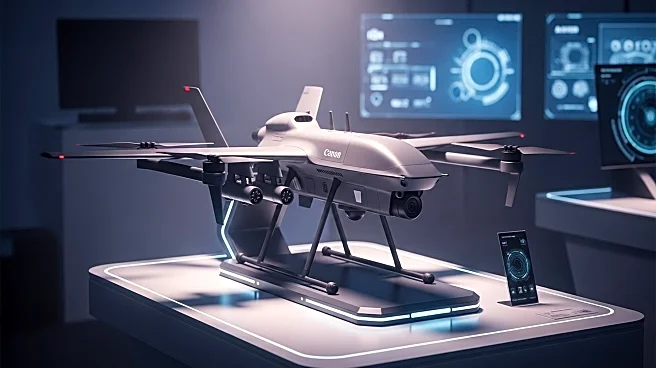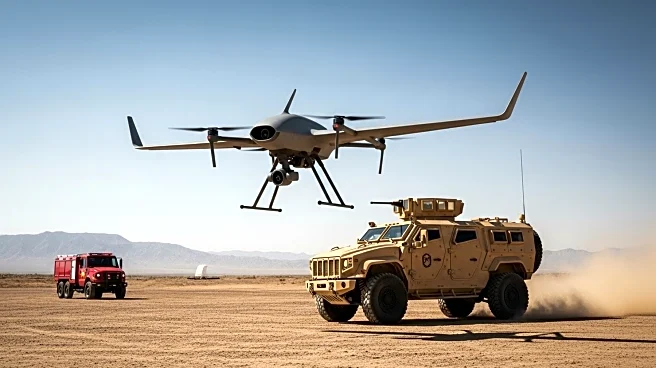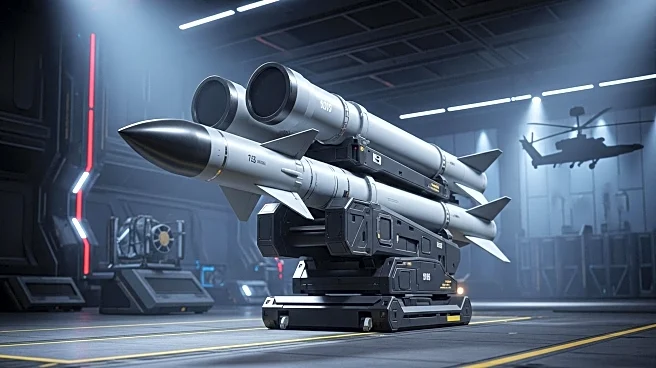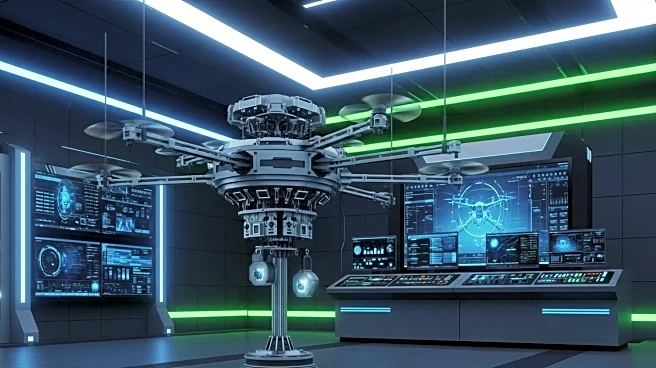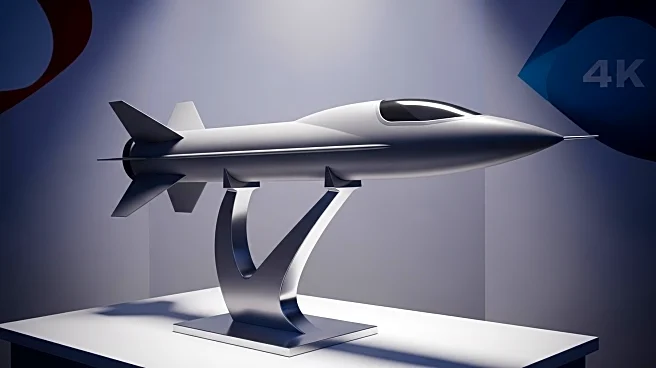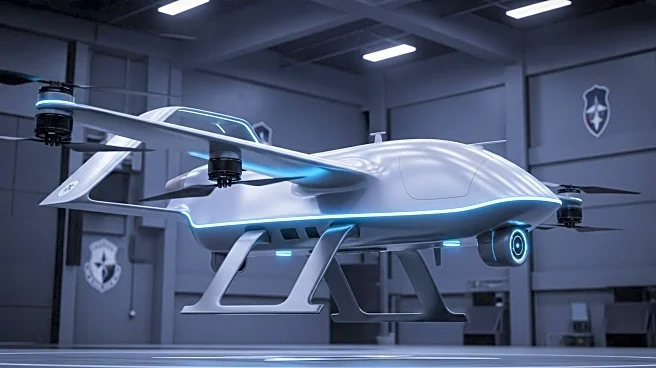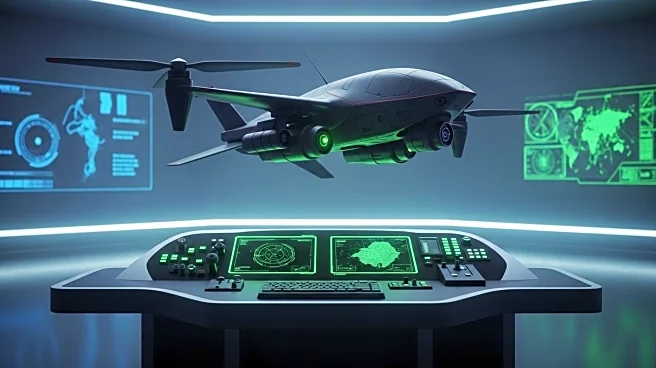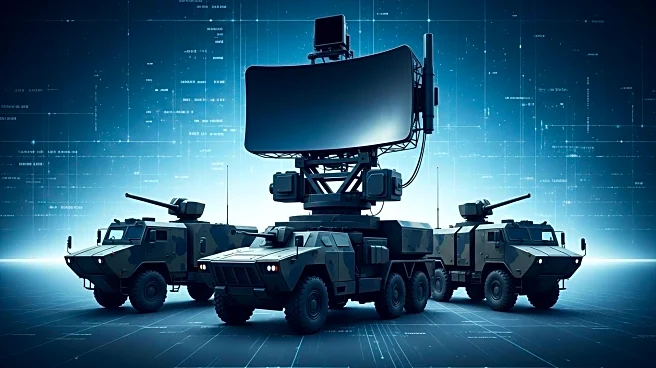What's Happening?
The US Army is collaborating with Northrop Grumman to develop phase two of the Improved Threat Detection System (ITDS) program. Phase one focused on missile warning capabilities, while phase two aims to enhance counter-unmanned aircraft system (C-UAS) components and other advanced capabilities. Northrop Grumman was selected for phase two development by the US Army Project Management Office, Aircraft Survivability Equipment (PMO ASE) in July. The company is working closely with the Army to finalize the statement of work for phase two, ensuring that milestones are met within the required timeframe. A request for proposals (RFP) for phase two development is expected to be issued soon, with the goal of awarding a contract by the end of 2025. Phase two is anticipated to span a three-year period.
Why It's Important?
The development of phase two of the ITDS program is crucial for enhancing the US Army's capabilities in detecting and countering threats, particularly from unmanned aircraft systems. This advancement is significant for national security, as it aims to improve the Army's ability to respond to evolving threats in modern warfare. The collaboration with Northrop Grumman highlights the importance of industry partnerships in advancing military technology. Successful implementation of phase two could lead to improved survivability and operational effectiveness for US military forces, potentially influencing defense strategies and procurement decisions.
What's Next?
The next steps involve the issuance of a request for proposals (RFP) by the Army, followed by the awarding of a contract for phase two development by the end of 2025. As the program progresses, stakeholders will likely monitor the development closely to ensure that the enhanced capabilities meet the Army's requirements. The collaboration may also prompt further discussions on the integration of advanced technologies in military systems, potentially leading to additional partnerships and innovations in defense technology.
Beyond the Headlines
The ITDS program's focus on counter-unmanned aircraft systems reflects broader trends in military technology, where the need to address emerging threats from drones and other unmanned systems is increasingly critical. This development may influence future defense policies and strategies, as military forces worldwide seek to enhance their capabilities in this area. Additionally, the program underscores the ethical considerations of using advanced technology in warfare, including the balance between technological advancement and the potential for increased conflict.
